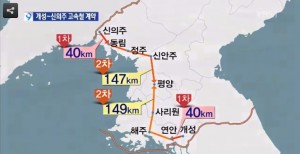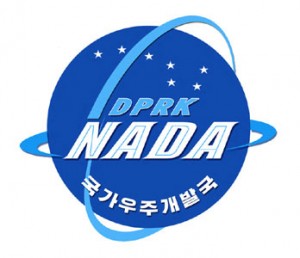Reporter: Would you please give me a briefing on the Rason Economic and Trade Zone that is now under development.
Choe: As you know, northeast Asia becomes one of the global development regions with a great potentiality, for the countries in this region have comparative advantages in respect of availability of production factors such as economic conditions, natural resources and economic and trade relations.
The Rason Economic and Trade Zone, situated on the western shore of the lower Tuman River in the northeastern part of Korea, borders on China and Russia, and Japan with the sea on the east. Its geographical location offers immense economic and traffic advantages as a transportation hub as well as a bridgehead of the continent.
Occupying an area of 470 km2, it has Rajin Port with an annual handling capacity of 3 million tons of cargoes, Sonbong Port with a handling capacity of 2 million tons of oil and Ungsang Port with a handling capacity of 600 000 m3 of timbre. The sea off the ports is deep and not frozen even in winter.
Rajin Port, in particular, has favourable conditions for creating cargo handling capacity of over 100 million tons without building a breakwater thanks to the Taecho and Socho islands in front of it.
The zone has also advantageous traffic connections with neighbouring countries.
Rajin-Wonjong class-B road (51 km), Rajin Port-Tumen railway (158 km) and Rajin Port-Khasan railway (51 km) are under construction or nearing completion.
The Rason Economic and Trade Zone is endowed with abundant tourist resources such as beautiful seascape, lake and bathing resorts, and 20-odd islands including Pipha, Taecho, Socho and Al islands.
In view of these favourable geopolitical and economic conditions, the DPRK government declared Rason city as an economic and trade zone on December 28, 1991 and held an international investment seminar with participation of entrepreneurs from 27 countries under the sponsorship of the UNDP and UNIDO in September 1996. It also raised Rason city to the status of special city on January 4, 2010 and agreed with China on the issue of joint development and management of Rason Economic and Trade Zone and Hwanggumphyong-Wihwado Economic Zone in May 2010.
In November 2010 the DPRK and the Chinese governments signed the Agreement on Joint Development and Management of Rason Economic and Trade Zone and Hwanggumphyong-Wihwado Economic Zone and organized the DPRK-China Joint Guidance Committee. The second session of the committee was held in June 2011 in Yanji, Jilin Province, China and its third session in August 2012 in Beijing. Besides, both governments concluded the agreement on establishment and operation of management committee for Rason Economic and Trade Zone, the master plan for DPRK-China joint development of the zone, the framework agreements on investment in ports, industrial districts and power transmission within the zone and investment and cooperation for construction of a new border bridge between Wonjong and Quanhe, the agreements on investment and cooperation for a high-efficiency agricultural model district and investment and cooperation for building-materials industry and the master plans for Sonbong-Paekhak industrial district and Rajin port industrial district.
The development of the zone in which a hundred and scores of businesses from different countries of the world are now active is in its initial stage but the number of potential investors with exceptional interests in the zone is increasing as days go by.
Reporter: How is the present state and prospect of the zone?
Choe: I shall begin with the progress of city construction.
The city is divided into residential quarters, industrial district and traffic junction district. The residential quarters consist of economic and trade area and peripheral area; the economic and trade area is subdivided into Rajin, Sonbong, Ungsang, Kulpho-Uam and Chonghak areas and the peripheral area into Tumangang, Hongui, Wonjong and Huchang areas. The industrial area embraces Changphyong, Yokjon, Chonggye, Sinhung, Tongmyong, Namsan and Andong areas.
The traffic junction district includes Rajin, Sonbong and Ungsang ports, Rajin, Ungra and Sonbong railway stations and Chongjin-Wonjong and Chongjin-Tuman River roads.
The Rajin Port, a transit trade port, is the hub of international cargo transit transportation and transport of exports and imports of entrepreneurs who invested in the zone.
The port has assignments to transport marine products for export from the East Sea of Korea and every kind of cargoes from and to northeast area of China and Far East Region of Russia.
The Rajin Port consists of three wharves; wharf No. 1 is designed to be renovated and operated by China Dalian Chuang Li Co., Ltd. and wharf No.3 by Rason International Container Transport J. V. Company to be set up according to the contract with Russian Rail Trade Co., Ltd.
The project of Rajin-Wonjong road started in April 2011 and completed in October 2012, and the power transmission project is now under way.
Currently, three railways run through Rason.
In the whole section of the Pyongyang-Tumangang line, standard gauge track
(1,435 mm) is laid from Pyongyang to Rajin and combined-gauge track with standard gauge and broad gauge (1 520 mm) from Rajin Railway Station to Tumangang Railway Staion, leading to Khasan Railway Station.
The updating project of Rajin-Namyang railway has been agreed with China in October 2012 and the construction of Sonbong-Paekhak industrial district, building materials industrial district, high-efficiency agricultural model district and Wonjong-Quanhe border bridge is in full swing.
When the construction projects of power line, railways, ports and border bridge are brought to completion, the Rason Economic and Trade Zone will be turned into a promising economic and trade zone of the world standard.
Next, tourism is booming in this zone.
Rason has eight bays and 21 islands, big and small.
There are Pipha, Chujin and Kalum Headland tourist attractions furnished with hotels, restaurants and sea bathing grounds along the coast.
Rason abounds in natural monuments, mineral water, spring water and marine products, and sea birds and coastal scenery strike tourists with admiration.
As mentioned above, the Rason Economic and Trade Zone is a special economic zone equipped with all conditions favourable for preferential trade and investment, transit transportation, tourism and financial and service businesses.
The DPRK government is constantly encouraging foreign investors to invest in intermediate trade, industry, agriculture, construction, transport, communications, science and technology, tourism, service and finance.
Today the development prospect of the zone is optimistic.
We are looking forward to an active investment in development projects of the zone, promising high profit with small investment.
Reporter: Thank you for kind explanation.
State Economic Development Commission of the DPRK


